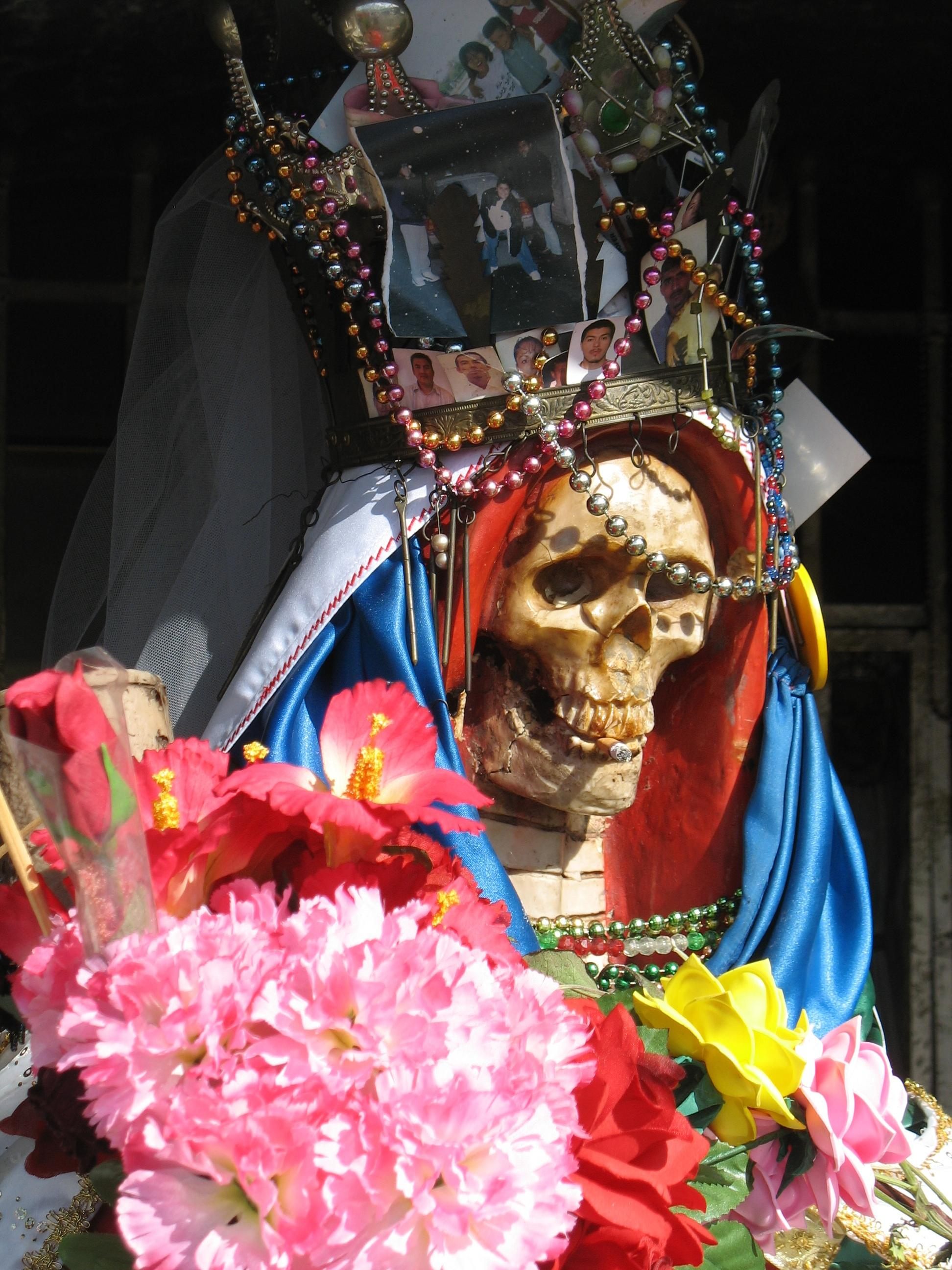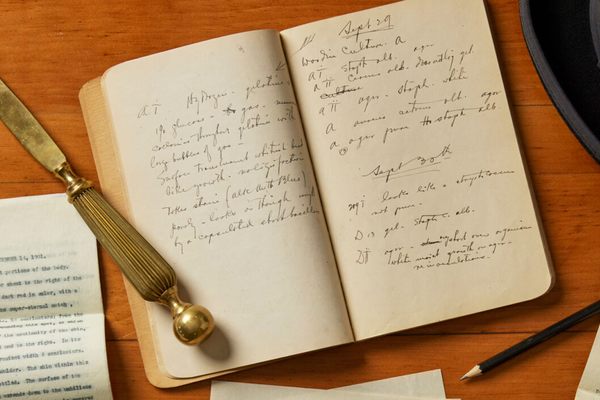The Many Faces of La Flaca

Santa Muerte holds the world in her hand. (Photo: issa/flickr)
La Comandante Bombon. La Vero. La Tosca. La Perris, la Pelos, la Güera Loca, la Beba, la Kitty, la Lola. These aliases belong to a few of the growing number of women who have been conscripted into the underground world of drug cartels—often, as assassins. Collectively, they are sometimes called las Barbies, las Tinkerbells, las Reinas, or simply, sicarias—hit women. Starting about a decade ago, women’s participation in the drug trade started to rise, and as news of these women’s deeds started to trickle out—and as they were dispatched, sometimes brutally, by rival organizations, some of them gained a certain degree of notoriety.
Perhaps the most intriguing alias that a sicaria has chosen, though, is La Flaca or La Flaka—the skinny woman. Not just one but three women associated with Mexican drug cartels have chosen this name, probably independently of each other.
It’s easy to imagine one reason why this alias might resonate with women whose jobs involve danger and killing, since it is also an alias of Santa Muerte, the death saint, whose popularity in Mexico has exploded in the past decade.
Two of the women who used the name are in jail; the third is now dead—killed, dismembered and packed into a cooler.
It’s not certain that any of the three took the name because of its association with death. (The one who died, in particular, was incredibly skinny.) But, says Andrew Chesnut, a professor of Religious Studies at Virginia Commonwealth University, “there’s a good chance that they were called that mostly because of the relationship to Santa Muerte, who dispatches people to their death.”
One circumstantial clue looms large. The second La Flaca, Nancy Manriquez Quintanar, worked in Ecatepec, a suburb of Mexico where the largest temple to Santa Muerte in Mexico is located. Quintanar worked for Los Zetas, one of the most powerful organized crime organizations in the country. Before she was arrested in 2011, when she was 25 years old, she allegedly aided the murders of nine people. Her role was supposedly to haunt bars and nightclubs in order to collect information about drug dealers from rival groups and pass information to the hit men.
It’s not so dissimilar to the role that Santa Muerte plays. “Some people ask Santa Muerte to bring death to others,” says Chesnut, whose book Devoted to Death documented her rise to popularity. “Some Catholics will tell you: God is the one who sends her. She doesn’t make decisions herself. But some people treat her as a god, and believe that she can go after people.” Like Quintanar, she’s a harbinger of death.
It’s not just female assassins who’ve taken the name of Santa Muerte. In April, reports came out about a drug called La Flakka—a sort of hallucinogen that had quickly become popular in Florida. Then again, there’s also another La Flaka who has risen to fame in recent months—no assassin, but still a hit woman, as a contestant on the Spanish-language version of The Voice.

Santa Muerte, appearing just south of the Texas-Mexico border (Photo: Public Domain/WikiCommons)












Follow us on Twitter to get the latest on the world's hidden wonders.
Like us on Facebook to get the latest on the world's hidden wonders.
Follow us on Twitter Like us on Facebook